The knowledge and skills that a learner must have before attending this course are as follows:
- Basic computer literacy
- Basic Microsoft Windows navigation skills
- Basic Internet usage skills
Upon completing this course, you will be able to meet these objectives:
- Install, operate, and troubleshoot a medium-sized network, including connecting to a WAN and implementing network security
- Describe the effects of new technologies such as IoE, IoT, IWAN, and SDN on network evolution
After The CCNA curriculum includes a third course, Interconnecting Cisco Networking Devices: Master (CCNAM), a derivative works course consisting ICND1 and ICND2 content in its entirety, but with the content merged into a single course. Overlapping content between ICND1 and ICND2 is eliminated and content is rearranged for the purpose of the course flow.
it is an instructor-led training course that teaches learners how to install, operate, configure, and verify a basic IPv4 and IPv6 network, including configuring a LAN switch, configuring an IP router, connecting to a WAN, and identifying basic security threats. Also covers topics in more depth and teaches learners how to perform basic troubleshooting steps in enterprise branch office networks, preparing learners for Cisco CCNA certification
The course contains these components:
- Building a simple network
- Establishing Internet Connectivity
- Summary Challenge
- Implementing Scalable Medium Sized Network
- Introducing IPv6
- Troubleshooting Basic Connectivity
- Implementing Network Device Security
- Implementing an EIGRP-Based Solution
- Implement a Scalable OSPF-Based Solution
- Implementing Wide-Area Networks
- Network Device Management
Module 1: Introduction to Networks
introduces the architecture, structure, functions, components, and models of the Internet and other computer networks. The principles and structure of IP addressing and the fundamentals of Ethernet concepts, media, and operations are introduced to provide a foundation for the curriculum. By the end of the course, students will be able to build simple LANs, perform basic configurations for routers and switches, and implement IP addressing schemes.Module 2: Switched Networks
describes the architecture, components, and operations of switches in a network. Students learn how to configure a switch for basic functionality.Module 5: Connecting Networks
discusses the WAN technologies and network services required by converged applications in a complex network. The course enables students to understand the selection criteria of network devices and WAN technologies to meet network requirements. Students learn how to configure and troubleshoot network devices and resolve common issues with data link protocols. Students will also develop the knowledge and skills needed to implement IPSec and virtual private network (VPN) operations in a complex network.
Chapter 1: Hierarchical Network Design
Chapter 2: Connecting to the WAN
Chapter 3: Point-to-Point Connections
Chapter 4: Frame Relay
Chapter 5: Network Address Translation for IPv4
Chapter 6: Broadband Solutions
Chapter 7: Securing Site-to-Site Connectivity
Chapter 8: Monitoring the Network
Chapter 9: Troubleshooting the Network
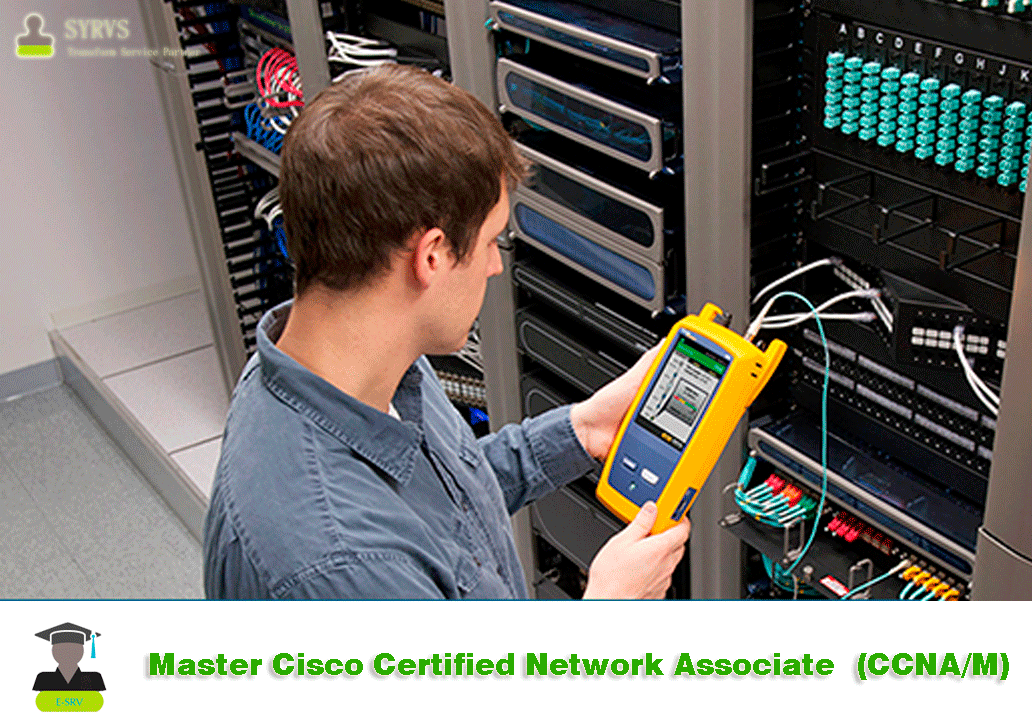
The knowledge and skills that a learner must have before attending this course are as follows:
- Basic computer literacy
- Basic Microsoft Windows navigation skills
- Basic Internet usage skills
The Building Cisco Service Provider Next-Generation Networks, Part 1 course is associated with the CCNA Service Provider certification. The course is 60 hours Instructor Lead Training course that provides network engineers and technicians with the basic knowledge and skills necessary to support a service provider network. The course provides knowledge of the major components of a network and helps learners to understand how service provider networks function. The course introduces IP Next-Generation Network (IP NGN) architecture that helps service providers to build modern, scalable and reliable networks. The course also includes classroom activities with remote labs that are useful to gain practical skills for deploying basic Cisco IOS / IOS XE and Cisco IOS XR software features to operate and support service provider networks.
Upon completing this course, you will be able to meet these objectives:
- Describe IP fundamentals that are important to build IP networks, host-to-host communication, and network components and functions
- Describe basic LAN switching and configure and verify basic LAN switch functions
- Describe routing concepts and discuss considerations when implementing routing on a network
- Describe the characteristics, functions, and components of a service provider WAN network
- Describe network management concepts and discuss considerations when implementing network management tools and features on the network
Module 1: IP Fundamentals
Lesson 1: Defining Functions of Networking
Lesson 2: Introducing TCP/IP Layers and the OSI Reference Model
Lesson 3: IP Addressing Overview
Lesson 4: Explaining IP Addressing and Subnets
Lesson 5: Describing the TCP/IP Transport Layer
Module 2: Basic LAN Switching
Lesson 1: Understanding Ethernet
Lesson 2: Connecting to an Ethernet LAN
Lesson 3: Using Switched LAN Technology
Lesson 4: Operating a Cisco Switch
Lesson 5: Performing Switched Network Optimizations
Lesson 6: Troubleshooting Switch Issues
Module 3: Basic IP Routing
Lesson 1: Exploring the Functions of Routing
Lesson 2: Introduction to the Cisco IOS XR
Lesson 3: Implementing Basic Routing
Lesson 4: Implementing EIGRP
Module 4: Connectivity Technologies
Lesson 1: Describing Access Technologies
Lesson 2: Introducing Service Provider Access, Edge, and Transport Technologies
Lesson 3: Enabling the WAN Internet Connection
Hardware Lab 5: Implement Internet Connectivity
Lesson 4: WAN Encapsulation
Lesson 5: Introducing VPN
Module 5: Network Management and Security
Lesson 1: Collecting Network Device Data
Lesson 2: Configuring Network Management Tools
Lesson 3: Explaining Network Security
Lesson 4: Understanding Switch Security
Lesson 5: Understanding Cisco Router Security
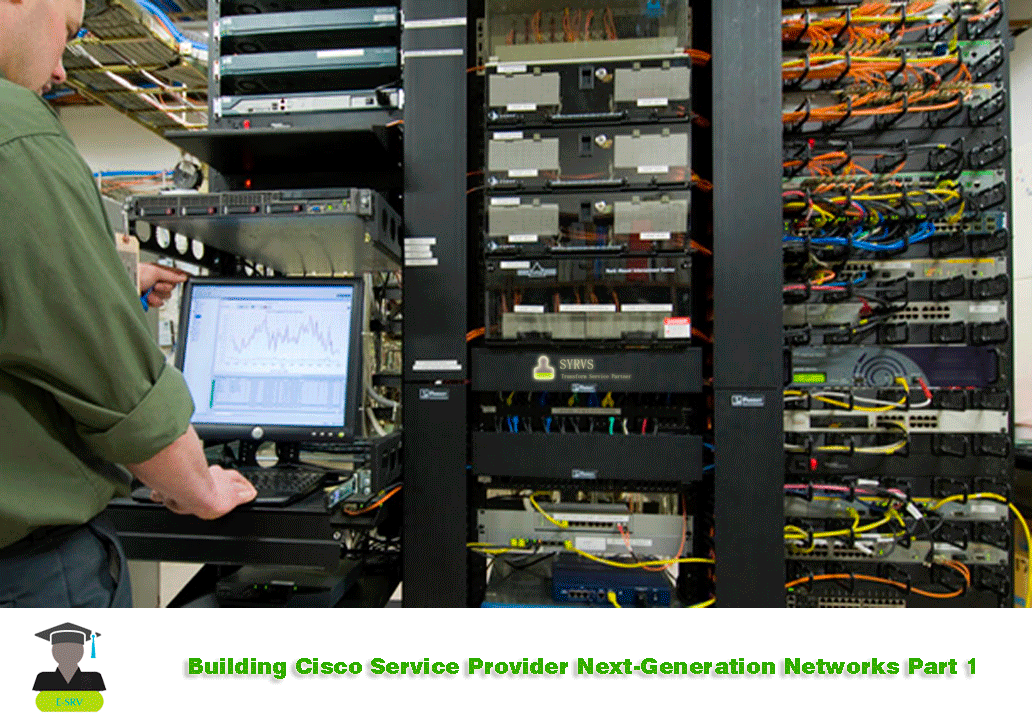
The knowledge and skills that a learner must have before attending this course are as follows:
- Basic computer literacy
- Basic Microsoft Windows navigation skills
- Basic Internet usage skills
- Basic knowledge of networking concepts
- Basic knowledge of Cisco IOS/IOS XE and Cisco IOS XR software configuration
- Skills and knowledge that are equivalent to those learned in the Building Cisco
- Service Provider Next-Generation Networks, Part 1 (SPNGN1) course
The Building Cisco Service Provider Next-Generation Networks, Part 2 course is associated with the CCNA Service Provider certification. The course is a 5-day Instructor Lead Training course that provides network engineers and technicians the knowledge and skills necessary to implement and support a service provider network. The course provides knowledge of the major components of a service provider network construction and the Cisco service provider IP NGN architecture. The course also includes classroom activities with remote labs that are useful to gain practical skills for deploying Cisco IOS / IOS XE and Cisco IOS XR software features to operate and support service provider networks.
Upon completing this course, you will be able to meet these objectives:
- Describe the Cisco IP NGN architecture
- Expand a small, switched LAN to a medium-size LAN with multiple switches, supporting VLANs, trunking, and STP
- Describe routing concepts as they apply to a P-network and discuss considerations when implementing routing on the network
- Implement internal and external routing protocols: OSPF, IS-IS, and BGP
- Describe and implement basic MPLS
- Determine how to apply ACLs that are based on network requirements, and implement ACLs on a P-network
- Describe when to use NAT and implement NAT on Cisco routers
- Describe basic IPv6 concepts and use different configuration scenarios to implement IPv6
- Describe the fundamentals of Cisco IOS XR technology
Module 1: Service Provider Network Architecture
Lesson 1: Introduction to Service Providers
Lesson 2: Cisco IP NGN Architecture
Module 2: Advanced LAN Switching
Lesson 1: Implementing VLANs and Trunks
Lesson 2: Spanning Tree Protocol Enhancements
Lesson 3: Routing Between VLANs
Lesson 4: First Hop Redundancy Protocols
Module 3: Internal Service Provider Traffic Forwarding
Lesson 1: Link-State Routing Protocols
Lesson 2: Implementing OSPF
Lesson 3: Implementing IS-IS
Lesson 4: Implementing Route Redistribution
Lesson 5: MPLS Basics
Module 4: External Service Provider Routing
Lesson 1: Introducing BGP
Lesson 2: Understanding BGP Path Attributes
Lesson 3: Establishing BGP Sessions and Processing BGP Routes
Lesson 4: Configuring Basic BGP
Module 5: ACLs and IP Address Translation
Lesson 1: Implementing Access Control Lists
Lesson 2: Transitioning to IPv6
Module 6: Cisco Service Provider Platforms
Lesson 1: Cisco Hardware Platform Placement
Lesson 2: Describing Cisco IOS XR Software Architecture and Features
Lesson 3: Explaining Software Maintenance Operations on Cisco IOS XR and Cisco IOS XE
Lesson 4: Explaining Configuration Management with Cisco IOS XR Software
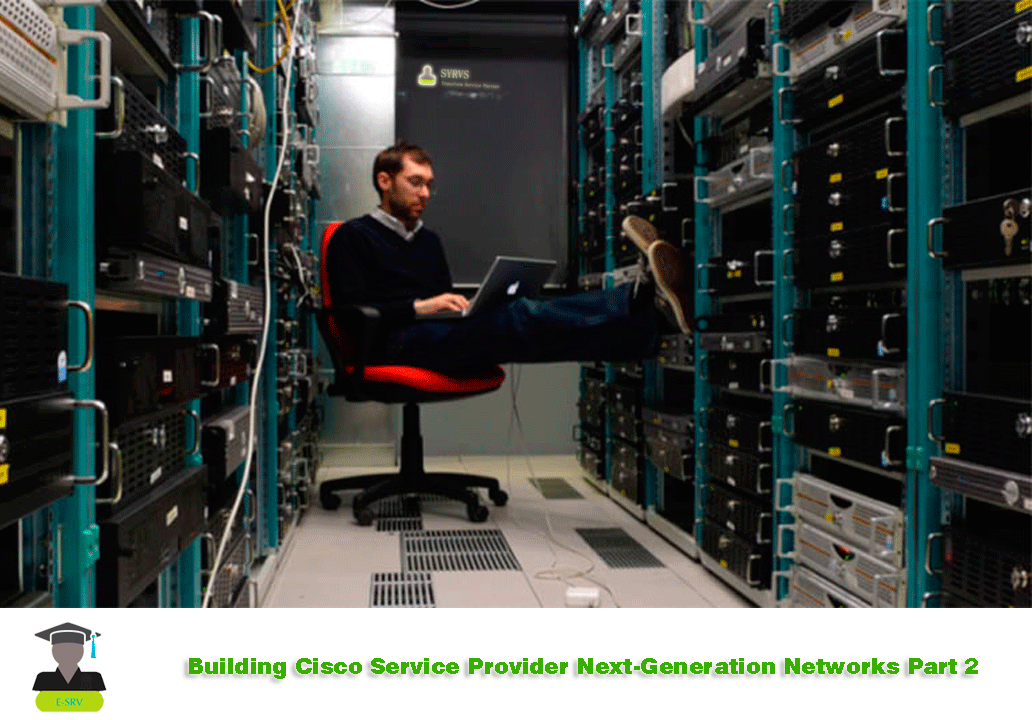
The knowledge and skills that a learner must have before attending this course are as follows:
- Intermediate knowledge of Cisco IOS/IOS XE and Cisco IOS XR Software configuration
- Skills and knowledge that are equivalent to those learned in the Building Cisco Service Provider Next-Generation Networks, Part 1 [SPNGN1]
- Next-Generation Networks, Part 2 [SPNGN2]
The Deploying Cisco Service Provider Network Routing (SPROUTE) is a 60 course that provides service provider professionals with information on the use of advanced routing in implementing scalability for Cisco routers that are connected to LANs and WANs. It is designed to help students prepare for the Cisco CCNP SP certification. The SPROUTE course is a component of the CCNP SP curriculum.
The goal is to train professionals to dramatically increase the number of routers and sites using these techniques instead of redesigning the network when additional sites or wiring configurations are added. The SPROUTE training reinforces the instruction by providing students with hands-on labs to ensure they thoroughly understand how to implement advanced routing within their networks. The course also includes classroom activities with remote labs that are useful to gain practical skills on deploying Cisco IOS/IOS XE and Cisco IOS XR features to operate and support service provider network.
Upon completing this course, you will be able to meet these objectives:
- Identify the typical routing requirements, and list the routing protocols that are used in service provider networks
- Describe the steps that are needed to implement OSPF in a service provider network
- Describe the importance of the Integrated IS-IS routing protocol for internal routing, and list the steps to follow when you are implementing Integrated IS-IS in a service provider network
- Implement BGP to connect an enterprise to a service provider and to connect a service provider to an upstream service provider
- Describe the tools that are used for routing protocol manipulation, route redistribution, and BGP route selection
Module 1: Service Provider Routing
Lesson 1: Understanding Service Provider Routing Protocols
Module 2: Implement OSPF in the Service Provider Network
Lesson 1: Introducing OSPF Routing
Lesson 2: Understanding OSPF Operation
Lesson 3: Implementing OSPF Routing
Lesson 4: Implementing OSPF Special Area Types
Module 3: Implement Integrated IS-IS in the Service Provider Network
Lesson 1: Introducing IS-IS Routing
Lesson 2: Implementing Integrated IS-IS Routing
Module 4: Implement BGP in the Service Provider Network
Lesson 1: Enterprise Connectivity to Service Providers
Lesson 2: Introducing BGP Routing
Lesson 3: Implementing Basic BGP Routing
Module 5: Routing Protocol Tools and Route Manipulation
Lesson 1: Introducing Routing Protocol Tools
Lesson 2: Introducing Route Maps and Routing Policy Language
Lesson 3: Implementing Route Redistribution

The knowledge and skills that a learner must have before attending this course are as follows:
- Basic computer literacy
- Basic Microsoft Windows navigation skills
- Basic Internet usage skills
- Basic knowledge of networking concepts
- Basic knowledge of Cisco IOS, IOS XE, and IOS XR Software configuration
- Skills and knowledge that are equivalent to those learned in the Building Cisco Service Provider Next-Generation Networks, Part 1 [SPNGN1] course
- Skills and knowledge that are equivalent to those learned in the Building Cisco Service Provider Next-Generation Networks, Part 2 [SPNGN2] course
- Skills and knowledge that are equivalent to those learned in the Deploying Cisco Service Provider Network Routing [SPROUTE] course
The Deploying Cisco Service Provider Advanced Network Routing (SPADVROUTE) is a 60 hours course that provides network engineers and technicians with the knowledge and skills necessary to implement and support a service provider network. It is designed to help students prepare for Cisco CCNP SP certification. The SPADVROUTE course is a component of the CCNP SP curriculum.
The course focuses on using Cisco routers that are typically found in the service provider network and on various technologies that are used to offer different services to customers. Upon completing this course learners will be able to configure, verify, and troubleshoot advanced BGP configuration, IP multicasting, and IPv6 transition mechanisms. Also deploying Cisco IOS/IOS XE and Cisco IOS XR features to operate and support SP network.
Upon completing this course, you will be able to meet these objectives:
- Configure the service provider network to support multiple BGP connections with customers and other autonomous systems
- Describe common routing and addressing scalability issues in the service provider network
- Describe available BGP tools and features to secure and optimize the BGP routing protocol in a service provider environment
- Introduce IP multicast services and the technologies that are present in IP multicasting
- Introduce PIM-SM as the most current scalable IP multicast routing protocol
- Describe service provider IPv6 transition implementations
Module 1: Service Provider Connectivity with BGP
Lesson 1: Defining Customer-to-Provider Connectivity Requirements
Lesson 2: Connecting a Customer to a Service Provider
Module 2: Scale Service Provider Network
Lesson 1: Scaling BGP in Service Provider Networks
Lesson 2: Introducing BGP Route Reflectors and Confederations
Module 3: Secure and Optimize BGP
Lesson 1: Implementing Advanced BGP Operations
Lesson 2: Improving BGP Convergence
Lesson 3: Improving BGP Configuration Scalability
Module 4: Multicast Overview
Lesson 1: Introducing IP Multicast
Lesson 2: Defining Multicast Distribution Trees and Forwarding
Lesson 3: Multicast on the LAN
Lesson 4: Populating the Mroute Table
Module 5: Intradomain and Interdomain Multicast Routing
Lesson 1: Introducing PIM-SM Protocol
Hardware Lab 5: Enable and Optimize PIM-SM
Lesson 2: Implementing PIM-SM Enhancements
Lesson 3: Implementing Interdomain IP Multicast
Lesson 4: Identifying Rendezvous Point Distribution Solutions
Module 6: Service Provider IPv6 Transition Implementations
Lesson 1: Introducing IPv6 Services
Lesson 2: Defining IPv6 Transition Mechanisms
Hardware Lab 10: Implement Tunnels for IPv6

The knowledge and skills that a learner must have before attending this course are as follows:
- Intermediate to advanced knowledge of Cisco IOS, IOS XE, and Cisco IOS XR Software configuration
- Skills and knowledge equivalent to those learned in these courses:
Building Cisco Service Provider Next-Generation Networks, Part 1 [SPNGN1]
Building Cisco Service Provider Next-Generation Networks, Part 2 [SPNGN2]
Deploying Cisco Service Provider Network Routing [SPRoute]
Deploying Cisco Service Provider Advanced Network Routing [SPADVRoute]
This course is designed to help students prepare for Cisco CCNP SP certification. It introduces the concepts of Multi-Protocol Label Switching (MPLS) and describes its implementation as well as exploring the MPLS Traffic Engineering (MPLS-TE) services built on the MPLS technology.
The course enables learners to use the technology principles of basic Quality of Service, and Quality of Service with MPLS to implement advanced features and functions. The focus of the course is on technology issues of MPLS and on best practices for implementing QoS from the Service Providers perspective and how to configure some of those features and functions in an existing routed environment.
Upon completing this course, the learner will be able to meet these overall objectives:
- Describe the features of MPLS, and how MPLS labels are assigned and distributed
- Discuss the requirement for traffic engineering in modern networks that must attain optimal resource utilization
- Introduce the concept of QoS and explain the need to implement QoS
- Classify and mark network traffic to implement an administrative policy requiring QoS
- Introduce different Cisco QoS queuing mechanisms used to manage network congestion
- Introduce the concept of traffic policing and shaping, including token bucket, dual token bucket, and dual-rate policing
Module 1: Multiprotocol Label Switching
Lesson 1: Introducing Cisco IP NGN Architecture
Lesson 2: Introducing MPLS
Lesson 3: Introducing MPLS Applications
Lesson 4: Label Distribution Protocol
Lesson 5: Introducing MPLS Forwarding
Lesson 6: Operating MPLS Forwarding
Lesson 7: Implementing MPLS in the Service Provider Core
Module 2: MPLS Traffic Engineering
Lesson 1: Introducing MPLS Traffic Engineering Components
Lesson 2: MPLS Traffic Engineering Operations
Lesson 3: Implementing MPLS TE
Lesson 4: Protecting MPLS TE Traffic
Module 3: QoS in the Service Provider Network
Lesson 1: Understanding QoS
Lesson 2: Implementing QoS in the SP Network
Hardware Lab 3: The Need for QoS
Lesson 3: Implementing MPLS Support for QoS
Module 4: QoS Classification and Marking
Lesson 1: Understanding Classification and Marking
Lesson 2: Using Modular QoS CLI
Lesson 3: Implementing Advanced QoS Techniques
Module 5: QoS Congestion Management and Avoidance
Lesson 1: Managing Congestion
Lesson 2: Implementing Congestion Avoidance
Module 6: QoS Traffic Policing and Shaping
Lesson 1: Understanding Traffic Policing and Shaping
Lesson 2: Implementing Traffic Policing
Lesson 3: Implementing Traffic Shaping
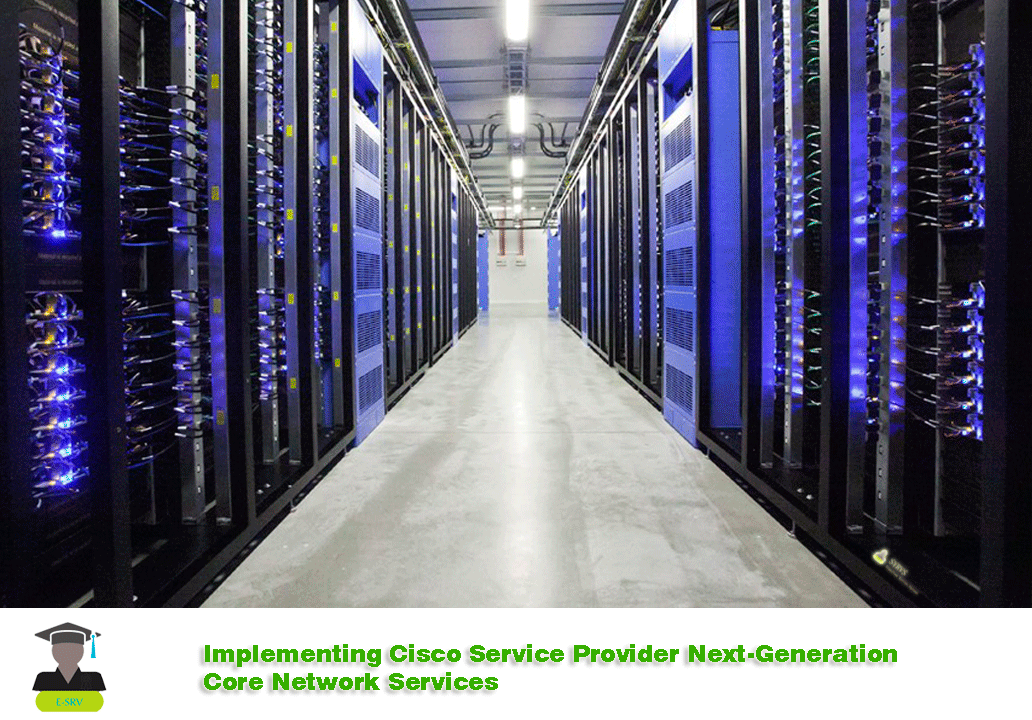
The knowledge and skills that a learner must have before attending this course are as follows:
- Intermediate to advanced knowledge of Cisco IOS, IOS XE, and IOS XR Software configuration.
- Skills and knowledge equivalent to those learned in these courses:
Deploying Cisco Service Provider Network Routing [SPRoute]
Deploying Cisco Service Provider Advanced Network Routing [SPADVRoute]
Implementing Cisco Service Provider Next-Generation Core Network Services [SPCore]
This course is a 60 hours course that is designed to help students prepare for the Cisco CCNP SP certification. The SPEDGE course is a component of the CCNP SP curriculum.
The SPEDGE course is designed to provide service provider professionals with information on the use of service provider VPN solutions. The goal is to train professionals to enable service provider point of presence to provide Layer 2 and Layer 3 VPNs. The SPEDGE training reinforces the instruction by providing students with hands-on labs to ensure they thoroughly understand how to implement VPNs within their networks.
The course also includes classroom activities with remote labs that are useful to gain practical skills on deploying Cisco IOS/IOS XE and Cisco IOS XR features to operate and support service provider network.
Upon completing this course, you will be able to:
- Describe the VPN technologies that are used in the service provider environment and the MPLS VPN peer-to-peer architecture
- Describe the implementation steps that are needed to provide MPLS Layer 3 VPN service in the service provider network
- Describe how the MPLS Layer 3 VPN model can be used to implement managed services and Internet access
- Describe MPLS solutions for IPv6 and inter-domain communication.
- Describe Layer 2 VPNs and Ethernet services
Module 1: VPN Technologies
Lesson 1: Introducing VPNs
Lesson 2: Introducing MPLS VPNs
Module 2: MPLS Layer 3 VPNs
Lesson 1: Implementing MPLS Layer 3 VPN Backbones
Lesson 2: Deploying Basic Routing in MPLS VPNs
Lesson 3: Deploying OSPF and BGP in MPLS VPNs
Module 3: Special Connectivity in MPLS Layer 3 VPNs
Lesson 1: Implementing Special Connectivity in MPLS VPNs
Lesson 2: Implementing Internet Access in MPLS VPNs
Module 4: MPLS IPv6 and Interdomain Solutions
Lesson 1: Deploying IPv6 in MPLS Environment
Lesson 2: Introducing MPLS Interdomain Solutions
Module 5: Layer 2 VPNs
Lesson 1: Introducing Layer 2 VPNs
Lesson 2: Implementing AToM
Lesson 3: Implementing VPLS
Lesson 4: Enhancing L2VPN Scalability
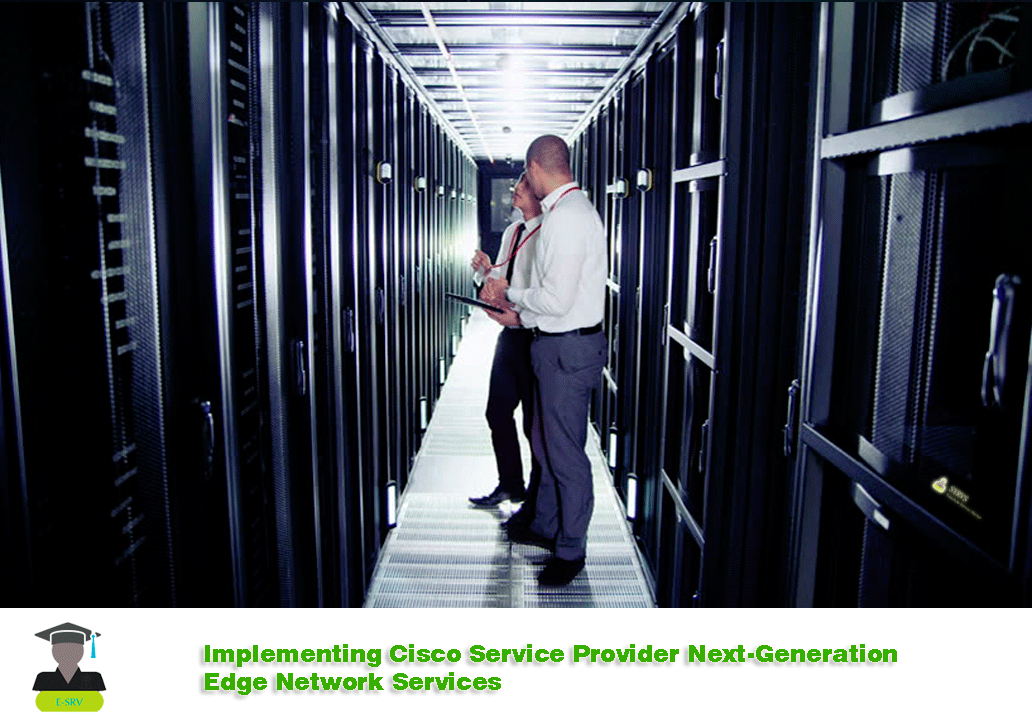
IPv6 Fundamentals, Design, and Deployment (Master IPv6) v4.0 is an instructor-led course, 60 hours course provides network engineers and technicians who are working in the enterprise sector with the knowledge and skills that are needed to study and configure the IP version 6 (IPv6) features of Cisco IOS/XR Software. The course also provides an overview of IPv6 technologies; covers IPv6 design and implementation; describes IPv6 operations, addressing, routing, services, and transition; and describes deployment of IPv6 in enterprise networks as well as in service provider networks. The course also includes case studies that are useful for deployment scenarios and labs.
- Describe the factors that led to the development of IPv6, and the possible uses of this new IP structure
- Describe the structure of the IPv6 address format, how IPv6 interacts with data link layer technologies, and how IPv6 is supported in Cisco IOS Software
- Describe the nature of changes to DNS and DHCP to support IPv6, and how networks can be renumbered using both services
- Understand the updates to IPv4 routing protocols needed to support IPv6 topologies
- Understand multicast concepts and IPv6 multicast specifics
- Describe IPv6 transition mechanisms and which methods will be most effective in your network
- Describe practices for IPv6-enabled networks
- Describe the standards bodies that define IPv6 address allocation, as well as one of the leading IPv6 deployment issues, multihoming
- Describe the deployment strategies that service providers are facing when deploying IPv6
- Describe case studies for enterprise, service provider, branch, and access networks
Course Modules
Module 1: Intro to IPv6
Module 2 : IPv6 Operations
Module 3 : IPv6 Services
Module 4 : IPv6-Enabled Routing Protocols
Module 5 : IPv6 Multicast Services
Module 6 : IPv6 Transition Mechanisms
Module 7 : IPv6 Security
Module 8 : Deploying IPv6
Module 9 : IPv6 and Service Providers
Module 10 : IPv6 Case Studies
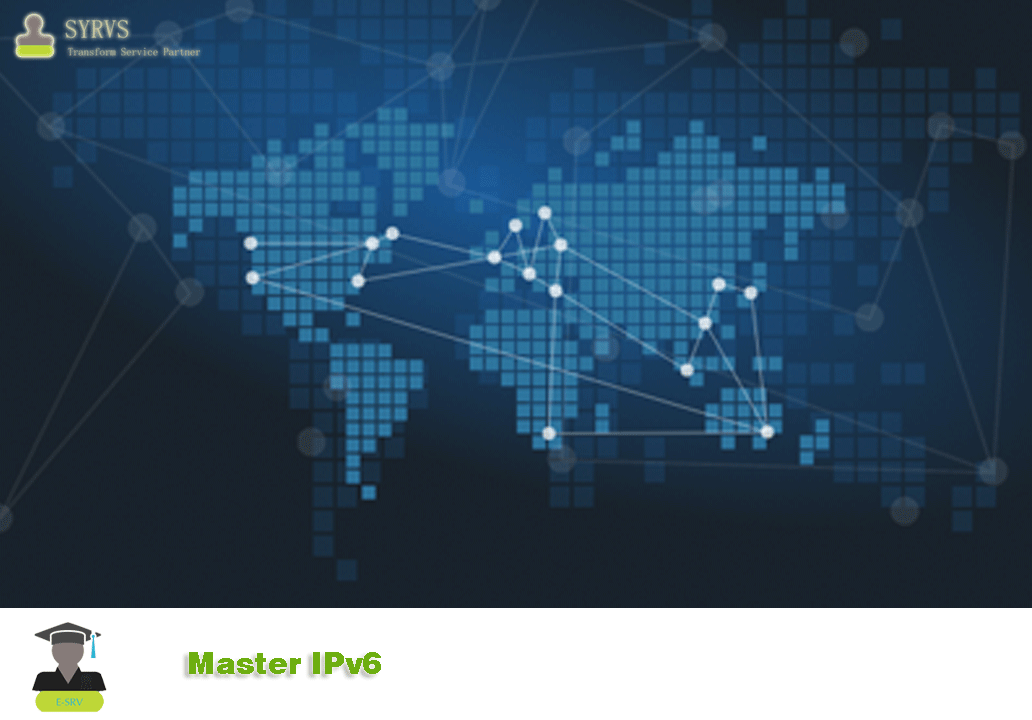
Configuring BGP on Cisco Routers provides students with in-depth knowledge of Border Gateway Protocol (BGP), the routing protocol that is one of the foundations of the Internet and New World technologies such as Multiprotocol Label Switching (MPLS). This curriculum covers the theory of BGP, configuration of BGP on Cisco IOS/XR routers, detailed troubleshooting information, and hands-on exercises that provide learners with the skills that they need to configure and troubleshoot BGP networks in customer environments. Different service solutions in the curriculum cover BGP network design issues and usage rules for various BGP features, preparing learners to design and implement efficient, optimal, and troublefree BGP networks.
Upon completing this course, you will be able to meet the following objectives:
- Describe how to configure, monitor, and troubleshoot basic BGP to enable interdomain routing in a network scenario with multiple domains
- Describe how to use BGP policy controls to influence the BGP route selection process in a network scenario in which you must support connections to multiple ISPs
- Describe how to use BGP attributes to influence the route selection process in a network scenario where you must support multiple connections.
- Describe how to successfully connect the customer network to the Internet in a network scenario in which multiple connections must be implemented
- Describe how to configure the service provider network to behave as a transit AS in a typical implementation with multiple BGP connections to other autonomous systems.
- Enable route reflection as possible solution to BGP scaling issues in a typical service provider network with multiple BGP connections to other autonomous systems
- Describe the available BGP tools and features to optimize the scalability of the BGP routing protocol in a typical BGP network
The course contains these components:
- Module 1: BGP Overview
- Module 2: BGP Transit Autonomous Systems
- Module 3: Route Selection Using Policy Controls
- Module 4: Route Selection Using Attributes
- Module 5: Customer-to-Provider Connectivity with BGP
- Module 6: Scaling Service Provider Networks
- Module 7: Optimizing BGP Scalability
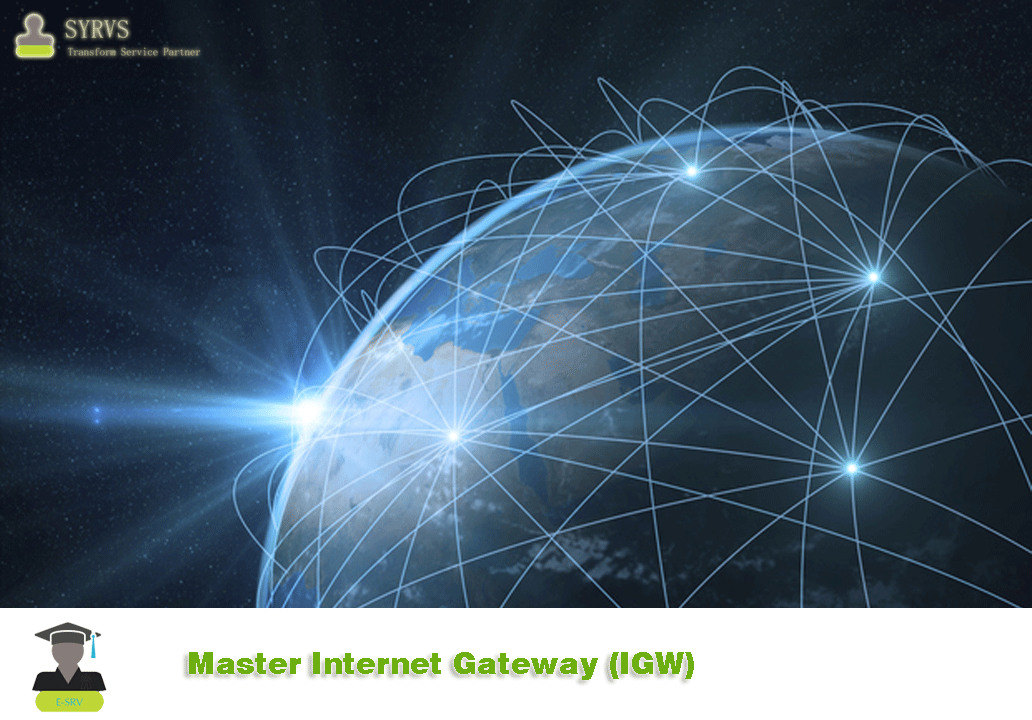
The Implementing Cisco MPLS Traffic Engineering and Other Features (Master MPLS) course is recommended training for individuals seeking advanced MPLS based knowledge and skills. The course will enable learners to gather information from the technology basics to some of the more updated features and functions such as Traffic Engineering, Carrier Supporting Carrier and Any Transport over MPLS (AToM). The focus of the course is on technology issues of MPLS from the Service Providers perspective and how to configure some of those features and functions in an existing routed environment
After completing this course the student should be able to:
- Identify MPLS's peer-to-peer architecture and explain label allocation, routing update distribution and packet forwarding model in this architecture
- Given a working MPLS network and diagram of a network, used the CISCO IOS commands required to successfully configure, monitor, and troubleshoot service provider support using the MPLS Carrier supporting Carrier service.
- Identify the MPLS Traffic Engineering architecture and explain how MPLS implements traffic engineering, establishes the constraint-based path and assigning traffic to traffic trunks
- Given a working MPLS network and diagram of a network, used the CISCO IOS commands required to successfully configure, monitor, and troubleshoot MPLS Traffic Engineering.
- Given a working MPLS network and diagram of a network, used the CISCO IOS commands required to successfully implement a defined SLA using the MPLS QoS services
- Given a working MPLS network and diagram of a network, used the CISCO IOS commands required to successfully configure, monitor, and troubleshoot layer-2 services using the Any Transport over MPLS service.
- Given a working MPLS network and diagram of a network, used the CISCO IOS commands required to successfully configure, monitor, and troubleshoot IPv6 support in a MPLS environment.
Module 1: MPLS VPN ReviewMPLS Label Assignment and Distribution Frame-Mode/Cell-Mode
Module 2: Carrier Supporting Carrier (CsC)
Module 3: MPLS Traffic Engineering Technology
Module 4: Configuring MPLS Traffic Engineering
Module 5: MPLS Quality of Service
Module 6: Any Transport over MPLS (AToM)
Module 7: MPLS IPv6 support

